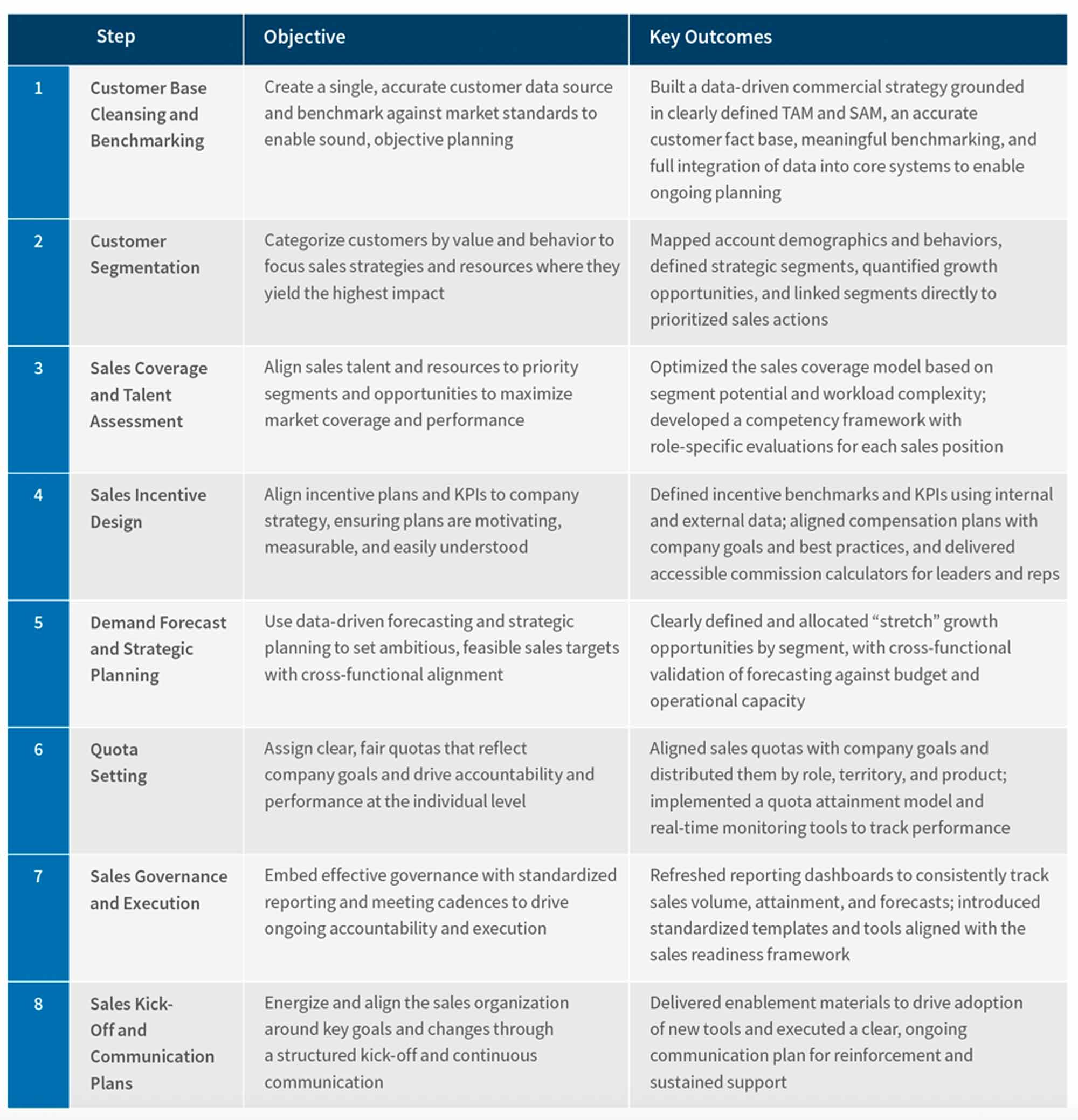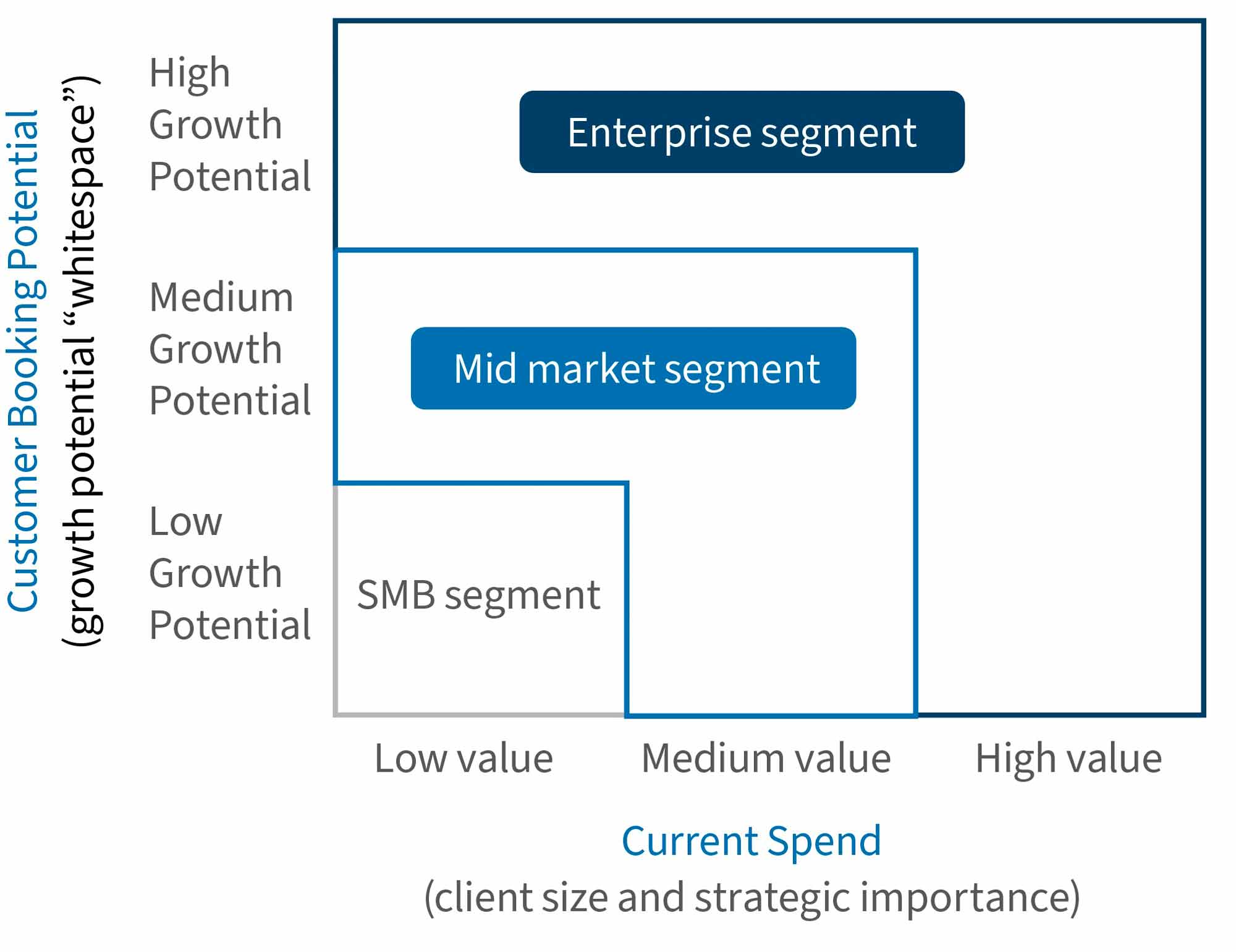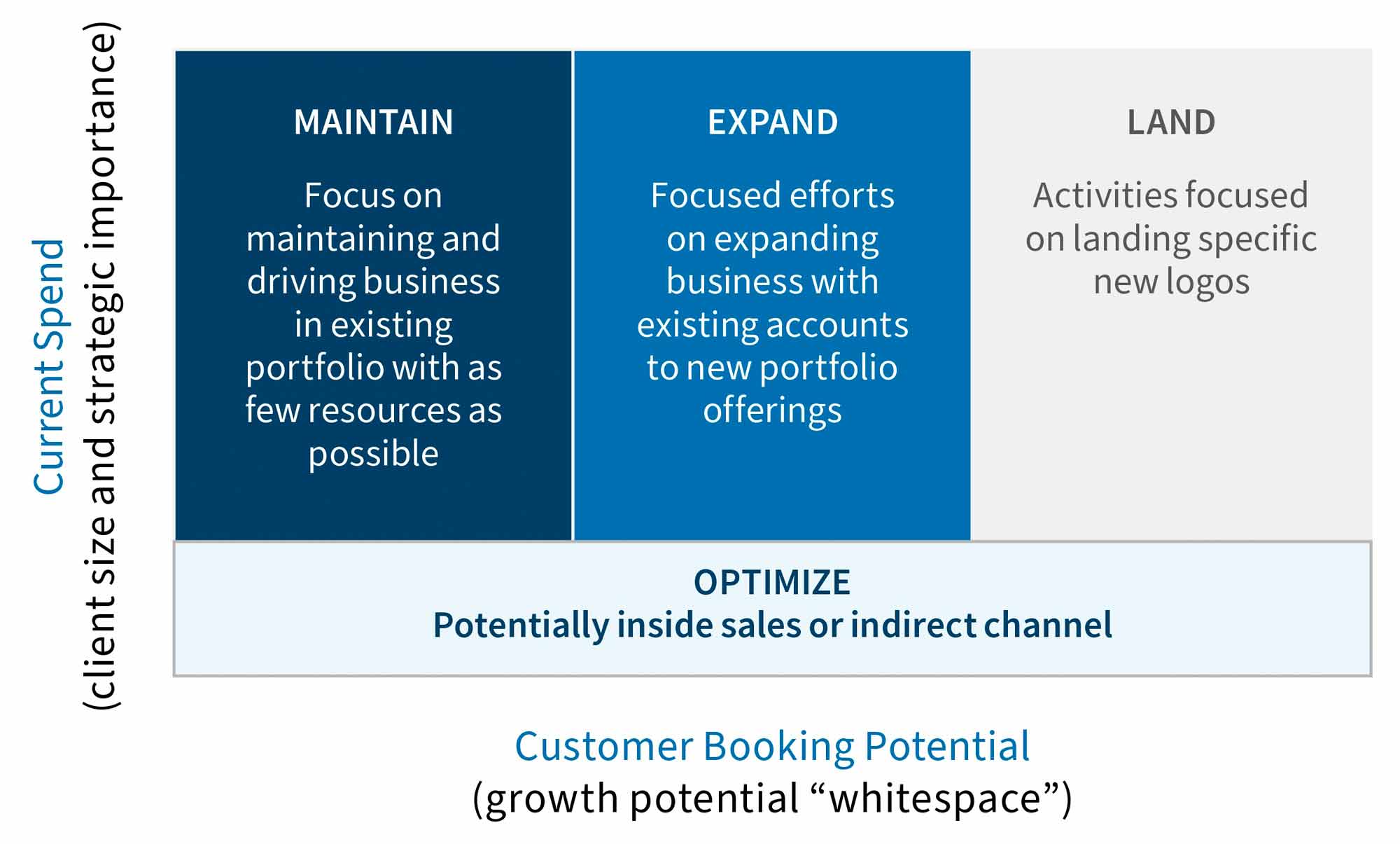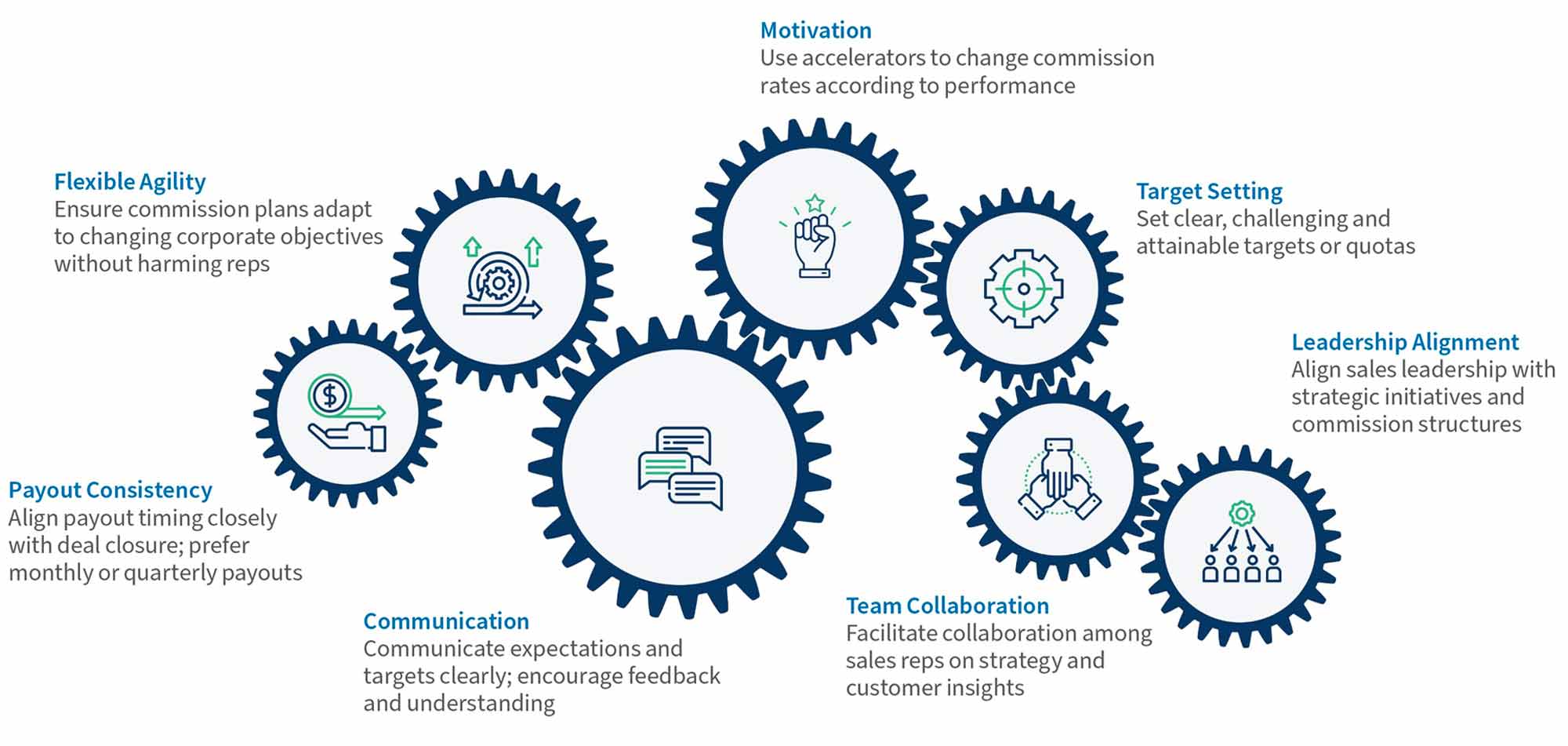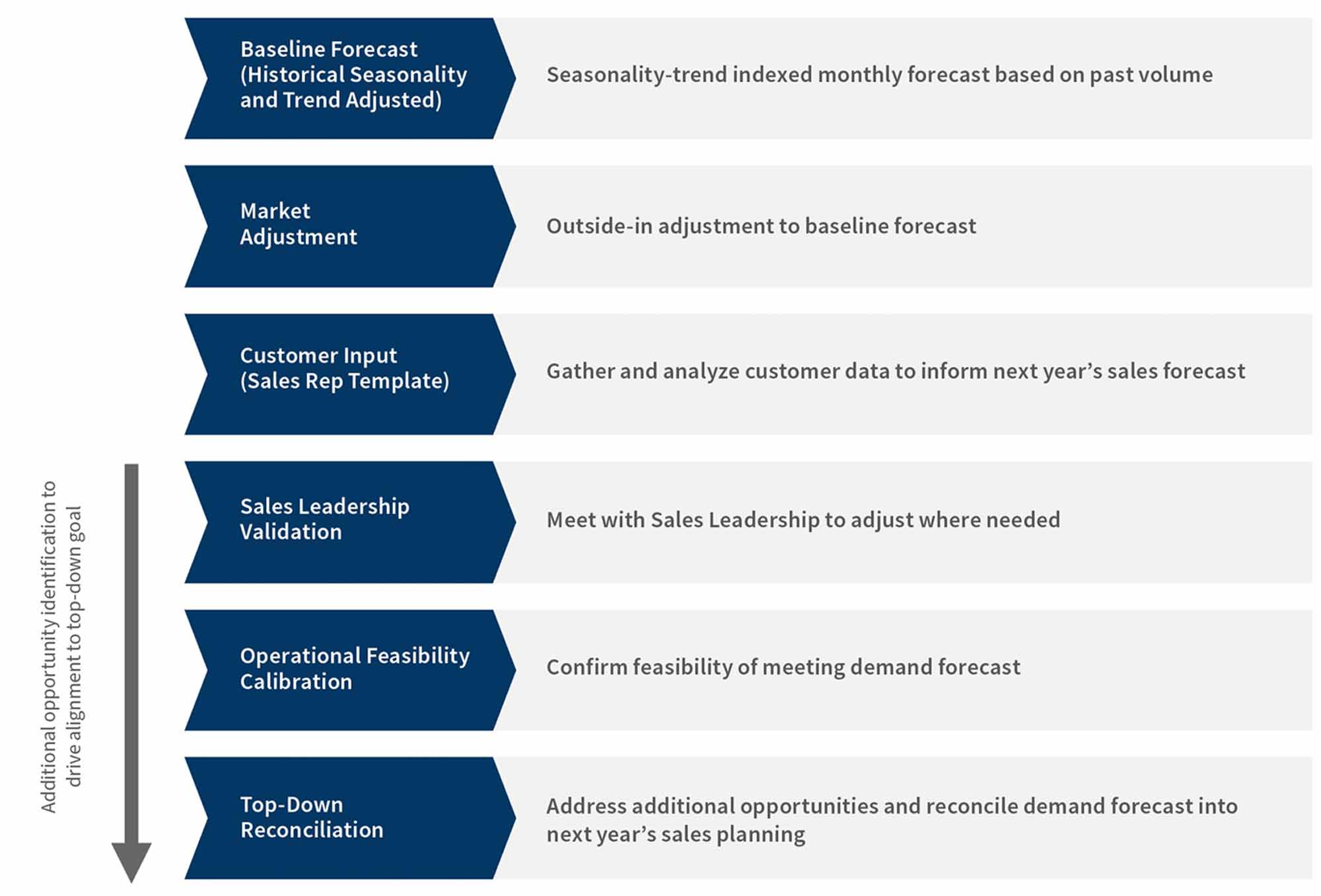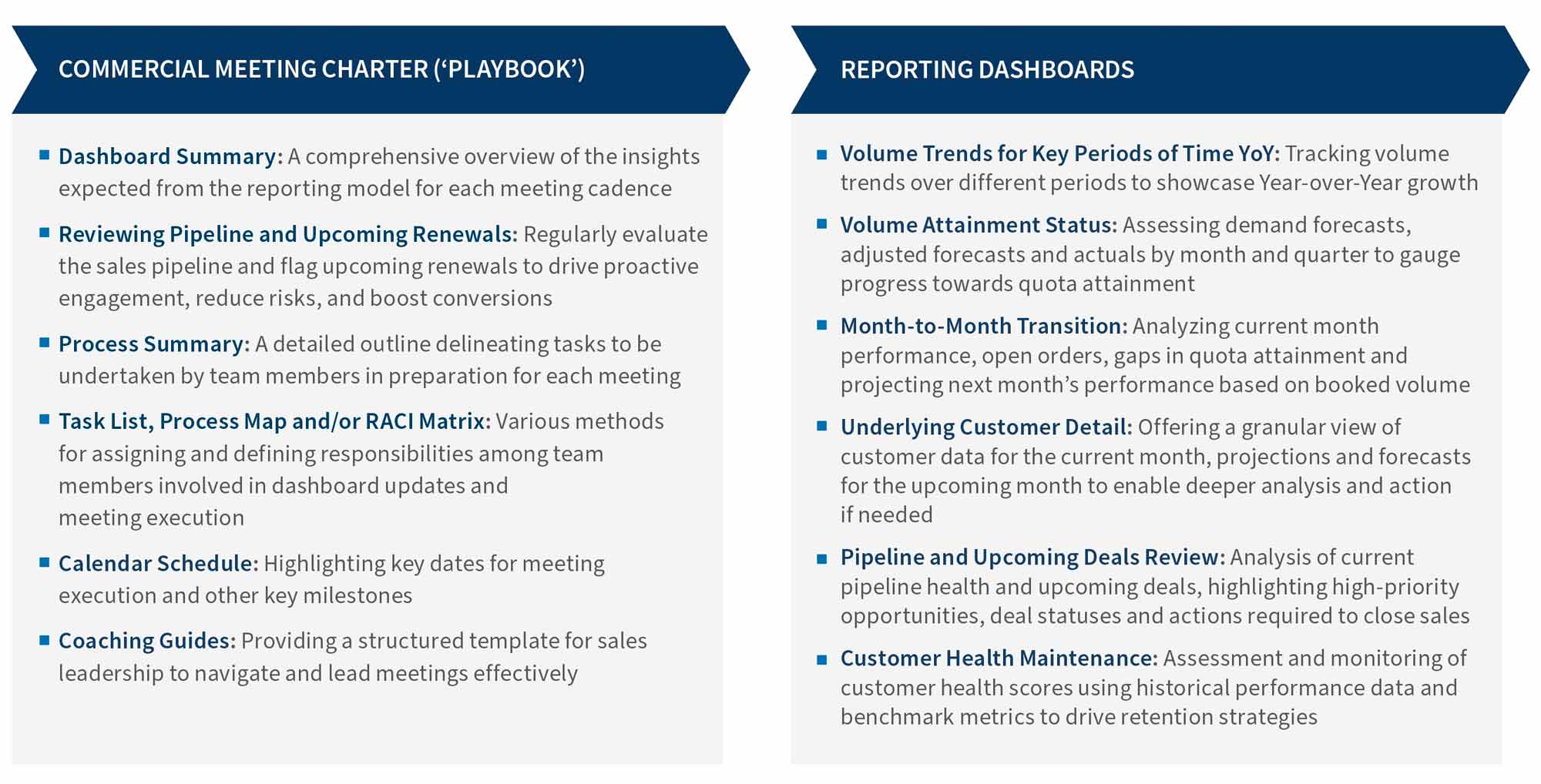- Accueil
- / Publications
- / White Papers
- / Next Fiscal Year Starts Now: The Eight-Step Sales Readiness Framework for CROs
Next Fiscal Year Starts Now: The Eight-Step Sales Readiness Framework for CROs
-
août 20, 2025
TéléchargezDownload White Paper
-
Executive Summary
Growth-focused organizations are rethinking how their sales functions operate. In an environment where market shifts are rapid and customer expectations are evolving, sales readiness is not just a commercial priority but has evolved to become an enterprise priority. This paper outlines eight critical steps to build a modern, value-driven sales planning process that connects go-to-market strategy with financial outcomes. From segmentation and forecasting to governance and enablement, each step represents an opportunity to improve profitability, scale smarter and unlock enterprise value.
Figure 1 - Eight-Step Sales Readiness Framework Summary
Step 1: Customer Base Cleansing and Benchmarking
Sales readiness begins with commercial clarity — grounding decisions in objective, harmonized data rather than legacy assumptions or fragmented ownership. Cleansing and benchmarking your customer base consolidates fragmented information, eliminates duplicates and aligns fields like sales ownership, segment and revenue. It creates parent-child distinctions to understand true account potential. Crucially, true benchmarking isn’t just about looking inward. Benchmarking across internal historicals and external comparators, including Total Addressable Market (“TAM”)/Serviceable Addressable Market (“SAM”), creates a credible baseline for growth strategy. In addition, it allows for the analysis of wallet’s share to start to identify whitespace in the market. By grounding your planning process in both internal data and external market baselines, you ensure your strategy is not only informed, but also ambitious, actionable and achievable. Without this baseline, strategic planning is based on too many assumptions and guesswork.
Why This Matters
A unified customer fact base is the foundation of commercial transformation. Without it, planning is guesswork. With it, CROs can confidently prioritize high-value segments, deploy resources with precision and accelerate growth from the ground up.
Key Checkpoints
- Do you have a clear understanding of your Total Addressable Market and Serviceable Addressable Market?
- Can you generate a consolidated and accurate customer fact base to support all downstream planning?
- Are internal and external benchmarks clearly applied to assess customer performance and health?
- Is your customer data fully integrated into core systems (CRM, BI tools) for ongoing use?
Step 2: Customer Segmentation
Not all customers drive the same value, so your sales strategy shouldn’t treat them equally. Effective segmentation uncovers white space, isolates high-potential clusters and aligns sales efforts to the accounts that truly move the needle. By layering in factors like buying behavior, total revenue or even elements of the customer’s profile (i.e., # of employees, assets under management, etc.) that are widely reported across the industry, organizations can unlock differentiated sales motions across customer tiers and verticals, while also gaining a clearer picture of where to penetrate. Leveraging advanced AI tools and customer research tools, organizations can precisely quantify the “Size of the Prize” and develop dynamic segmentation frameworks by region, industry, sales team or product mix, closely aligning with actual buying behaviors.
Why This Matters
Strategic segmentation powers growth, allowing you to create customized sales motions that cater directly to the needs of the cohort. It ensures sales teams are properly supported in their pursuit of the right opportunities, helping drive better margins, faster deal cycles and deeper account penetration. Selecting the right segmentation approach aligns with current offerings and future growth, enabling leaders to target up-sell, cross-sell, and win-back opportunities that support company strategy.
Figure 2 - Mature Product Portfolio Approach
Figure 3 - Emerging Product Portfolio Approach
Key Checkpoints
- Are key account demographics and behavioral data enriched to fullest potential?
- Do you have defined segmentation archetypes aligned with our strategic objectives?
- Can you quantify revenue opportunities (up-sell, cross-sell, win-back) within each segment?
- Is segmentation tied to actionable sales motions and prioritization frameworks?
Step 3: Sales Coverage and Talent Assessments
Coverage modeling translates strategy into structure. It is key to conduct comprehensive analysis of the sales coverage model across regions, segments and channels, followed by rigorous talent assessments to ensure optimal role alignment and maximize market impact. Sales motions are reviewed for efficiency and headcount is reassigned based on revenue acceleration potential. Reps must be evaluated on capability, fit and role clarity to enhance coverage efficiency.
Why This Matters
A misaligned sales model bleeds productivity. The right coverage model increases yield per seller, reduces cycle time and creates the structural agility needed to scale into new markets. This is where revenue ambition meets execution discipline, ultimately, aligning structure, talent and growth targets.
Key Checkpoints
- Is your current sales coverage model optimized for segment potential and workload complexity?
- Do you have a competency framework for each sales role in your coverage model that you evaluate your salespeople against?
- Do you have programs in place to upskill your salespeople based on the team’s strengths, weaknesses and gaps?
- Have account assignments and roles been updated based on talent fit and strategic priorities?
Step 4: Sales Incentive Design
Designing incentives is not just about motivating teams but about reinforcing strategy. Compensation is your most powerful performance lever. Incentive structures should drive the behaviors that matter most: profitable growth, cross-sell expansion and long-term account value. The best plans strike a balance between simplicity, fairness and strategic focus. Alignment of incentive structures with overall company goals enables dynamic and creative approaches to driving desired behaviors. This rewards not only what gets sold, but how it gets sold.
Why This Matters
Incentives shape how your teams show up every day. Thoughtfully crafted plans can ignite high performance, align effort to enterprise value and ensure sales motions are both disciplined and scalable. When incentives drive the right behaviors, growth follows.
Figure 4 - Key Drivers of Effective Sales Incentive Design
Key Checkpoints
- Are your incentive benchmarks and KPIs defined using internal and external data with realistic targets?
- Is the plan aligned with company goals and does it incorporate industry best practices?
- Are tools like commission calculators accessible and adopted by both leaders and reps?
- Is the sales incentive plan easy for reps to understand to the point where they can easily calculate their commission earnings?
Step 5: Demand Forecasting & Strategic Planning
Accurate demand forecasting is the backbone of successful sales planning, as it enables organizations to anticipate demand, set informed targets and allocate resources strategically. When paired with integrated planning, these forecasts translate into actionable goals across your segments and teams. A critical part of the process is monthly tracking of actuals against forecast, which helps teams quickly adapt strategies and stay aligned with market conditions. This ongoing review turns forecasting into a dynamic management tool, ensuring that sales planning is aligned with strategy to ultimately sustain sales growth.
Why This Matters
Without detailed demand forecasting and ongoing performance tracking, sales plans risk falling out of sync with reality. Monitoring actual performance vs. forecast each month provides early visibility into gaps or upside opportunities, enabling faster, smarter adjustments across sales motions.
Figure 5 - Integrated Demand Forecasting and Planning Process
Key Checkpoints
- Have “stretch” growth opportunities been clearly defined and allocated to appropriate sales segments?
- Have cross-functional teams validated the forecast against budget and operational capacity?
- Are bottom-up forecasts reconciled with board targets and supported by defined gap-closing strategies?
Step 6: Quota Setting
Quotas are the operational translation of your growth strategy. Effective quota design balances realism and ambition, factoring in market potential, rep capacity and white space opportunity to drive accountability and momentum. Ongoing monitoring ensures quotas are both ambitious and achievable, with most representatives ideally attaining 80–100% of target.
Why This Matters
Bad quotas create chaos. They misalign effort, distort forecasts and drive talent churn. Strategic quota setting focuses your team, protects margin and builds the confidence needed to scale, internally and in the market, while effective quota setting balances ambition with achievability, directly driving rep performance and organizational momentum while driving the business forward.
Key Checkpoints
- Are sales quotas aligned with company goals and broken into individual targets based on role, territory and product?
- Can you produce a quota attainment model showing performance distribution across the team?
- Do you have dynamic scenario calculators for team to simulate earnings/potential?
Step 7: Sales Governance and Execution
Sales strategy only works if it’s executed with precision. This means implementing structured meeting cadences and standardized reporting mechanisms to drive accountability, ensure visibility and keep sales performance on track throughout the fiscal year. A strong governance framework provides the necessary rhythm for sales leaders to monitor progress, coach effectively and intervene early when adjustments are needed.
Why This Matters
Without governance, execution becomes inconsistent and unpredictable. CROs who institutionalize sales governance enable faster decisions, consistent execution and alignment with enterprise goals, ensuring strategy is measured, refined and delivers tangible value.
Figure 6 - Commercial Sales Meeting Best Practices
Key Checkpoints
- Are reporting dashboards in place and consistently refreshed to track metrics like volume, attainment and forecasts?
- Are templates and tools standardized, accessible and aligned with your sales readiness framework?
- Are sales managers equipped with clear cadences and uniform coaching guides to run meetings that drive accountability?
Step 8: Sales Kick-off and Communication Plans
A sales kick-off is a leadership and team-building moment that allows everyone to share successes, ideas and solutions around gaps. It strategically aligns and energizes the team around key priorities for the new fiscal year. Executive communications and targeted manager engagement ensure clarity on goals, tools and expectations, while supplemental resources and formal sign-offs drive accountability and unified execution.
Why This Matters
A sales kick-off is a catalyst that drives alignment, momentum and execution across teams. For CROs, it is the key lever to unify teams, clarify expectations and accelerate revenue by setting the tone, aligning priorities and energizing the sales force for high performance from day one.
Key Checkpoints
- Is the sales kick-off structured to align the team with the company’s vision and priorities?
- Are enablement materials prepared to support adoption of tools, incentives or structural changes?
- Is there a clear, ongoing communication plan for reinforcement and support?
Final Thoughts
Sales readiness evolved from just a commercial priority to a key strategic lever for enterprise value. Organizations that align data, talent, incentives and execution will not only grow faster, but more profitably. By treating sales readiness as an ongoing capability, leaders can unlock performance, drive better financial outcomes and turn their commercial function into a catalyst for transformation. Now is the time for leaders to elevate sales readiness as a lever for enterprise performance and sustained competitive advantage.
Related Insights
Related Information
Date
août 20, 2025
 Contacts
Contacts
Senior Managing Director
Managing Director
Senior Director



